

VW Adaptive Cruise Control Problems (Reasons and How to Guide)
As a proud owner of a VW car, you may have experienced the convenience and safety features of Adaptive Cruise Control (ACC). However, even with its benefits, there have been some reports of problems with VW’s Adaptive Cruise Control.
In this article, we will discuss some of the common issues that VW car owners have encountered with their ACC system and provide possible solutions to help you better understand and troubleshoot these problems.
So, if you have been facing any difficulties with your VW’s Adaptive Cruise Control, keep reading!
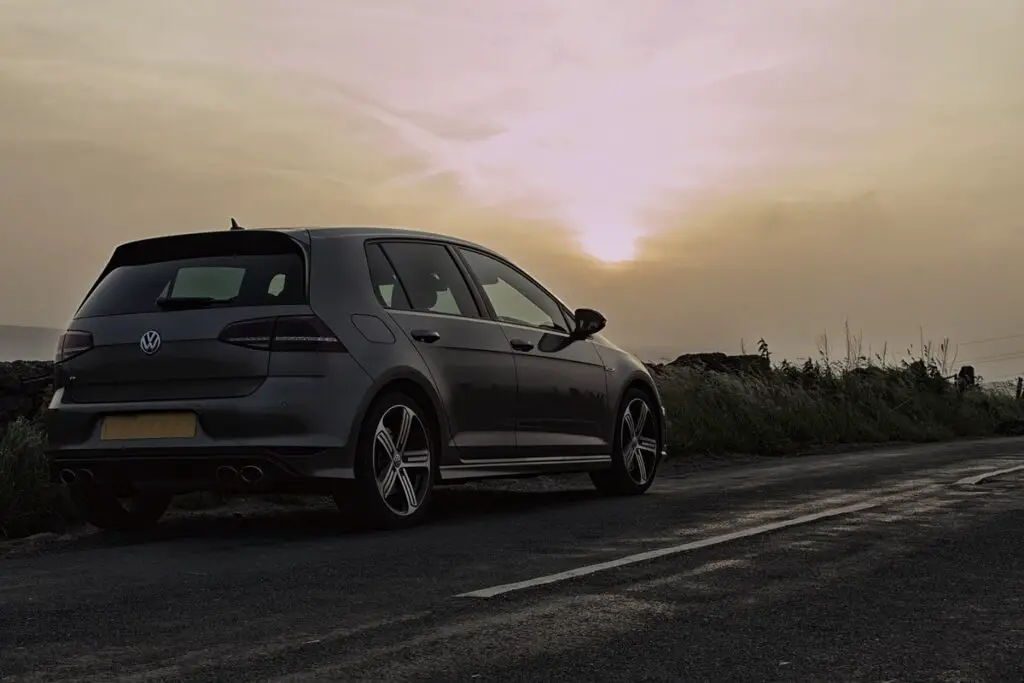
Common Problems with VW Adaptive Cruise Control
While VW’s Adaptive Cruise Control is designed to provide a seamless driving experience, there have been a few reported issues that may impact its performance.
Some of the most common problems with VW’s ACC system include:
Sudden disengagement of the system
Inaccurate speed control, false alerts and warnings, unresponsive controls, unexpected braking, random acceleration.
One of the most frustrating problems reported by VW car owners is the sudden disengagement of the Adaptive Cruise Control system while driving.
This can be a safety concern, especially on highways and busy roads where consistent speed control is crucial. In such cases, the ACC system may turn off without any warning or apparent reason, leaving the driver to manually adjust their speed.
Reasons: This could be due to various reasons, including technical malfunctions or sensor issues. It can be a cause for concern as it disrupts the smooth driving experience that ACC is designed to provide.
Solutions: If you encounter sudden disengagement of the ACC system, it is recommended to get your vehicle checked by a certified mechanic or visit your nearest VW dealership for assistance.
It’s also essential to follow the proper maintenance schedule and keep all sensors clean to avoid this problem.
Another common issue reported by drivers is inaccurate speed control while using Adaptive Cruise Control. This can lead to unexpected acceleration or deceleration, causing discomfort and potentially hazardous situations on the road.
Inaccurate speed control refers to the ACC system not maintaining a steady speed as set by the driver. It may result in sudden changes in velocity, which can be dangerous, especially in heavy traffic conditions.
Reasons: There can be several reasons for inaccurate speed control on VW Adaptive Cruise Control. One of the main culprits could be a malfunctioning sensor, which may not accurately measure the distance from other vehicles on the road.
Additionally, outdated software or calibration issues can also lead to incorrect speed control by the ACC system.
Solutions: To ensure accurate speed control, it is crucial to keep your vehicle’s sensors and cameras clean at all times. Additionally, always follow the manufacturer’s recommended maintenance schedule for your vehicle.
If you notice any issues with the ACC system, have it checked by a professional immediately.
Aside from inaccurate speed control, another common issue with VW Adaptive Cruise Control is false alerts and warnings.
This can happen when the system detects a potential collision or obstacle on the road, causing it to apply brakes abruptly even if there is no real danger.
False alerts and warnings occur when the ACC system mistakenly identifies a potential collision or obstacle on the road, causing it to react as if there is an imminent danger.
Reasons: False alerts and warnings can occur due to a variety of reasons, including environmental factors such as heavy rain or snow that may obstruct the sensors’ view.
Other common causes include objects on the road that resemble other vehicles, low sensor battery, or issues with the system’s software.
Solutions: To address false alerts and warnings, it is essential to regularly clean and maintain the sensors and cameras of your vehicle’s ACC system.
If you encounter this issue frequently, consider getting the system checked by a certified technician for any underlying hardware or software problems.
In some cases, recalibrating the system or updating its software may also help resolve false alerts.
Another common problem reported by VW owners with adaptive cruise control systems is unresponsive controls. This issue occurs when the system fails to respond to driver inputs, such as adjusting the desired speed or distance from other vehicles.
Reasons: There are several potential reasons for unresponsive controls in a VW adaptive cruise control system. One common cause is dirty or damaged sensors, which may prevent the system from accurately detecting and responding to other vehicles on the road.
Additionally, issues with the system’s wiring or connections can also lead to unresponsiveness.
In some cases, software glitches or malfunctions may cause the controls
Solutions: If you are experiencing unresponsive controls with your VW adaptive cruise control, there are several steps you can take to address the problem.
First, try cleaning the sensors and ensuring that they are not obstructed by any debris or damage.
If this does not solve the issue, it may be necessary to have a technician examine the system for any potential hardware or software problems.
In some cases, a system reset or software update may also help to resolve the issue.
It is important to address any problems with your ACC system promptly and seek professional assistance if needed to ensure safe and reliable operation.
Another common issue reported with VW adaptive cruise control is unexpected braking. This can occur when the system incorrectly detects a vehicle in front and applies the brakes, causing a sudden decrease in speed.
Drivers may also experience this when approaching a curve or exit ramp, where the system mistakenly interprets an obstacle as a vehicle and engages the brakes.
Reasons: There are several potential reasons for unexpected braking in a VW ACC system. One possible cause is a dirty or damaged sensor, which may not accurately detect the distance of other vehicles.
Another reason may be an issue with the software, such as outdated mapping data or incorrect settings.
In some cases, certain weather conditions, such as heavy rain or snow, can also affect the accuracy of the system’s sensors and cause unexpected braking.
Solutions: If you are experiencing any issues with your VW adaptive cruise control, there are several steps you can take to address the problem.
First, make sure all sensors and cameras are clean and free of obstructions. You can also try recalibrating the system by following the instructions in your vehicle’s manual or consulting a professional technician.
In some cases, updating the software may also resolve any issues.
If the problem persists, it is important to have your VW ACC system inspected and serviced by a certified technician to ensure safe and accurate operation.
Additionally, staying informed about any recalls or updates from Volkswagen can help prevent potential issues with your system.
Another common problem reported by VW owners with adaptive cruise control is random acceleration.
This occurs when the system suddenly accelerates the vehicle without any input from the driver. This can be a dangerous and unnerving experience for drivers, especially on busy roads or highways.
Reasons: There are several possible reasons for random acceleration with VW adaptive cruise control. One common cause is a dirty or malfunctioning sensor, which can send incorrect signals to the system and result in unintended acceleration.
Another potential reason could be a software glitch or error, which may require updating or recalibrating the system.
In rare cases, there may be a mechanical issue with the vehicle itself that is causing the random acceleration.
Solutions: If you experience random acceleration with your VW adaptive cruise control, there are a few potential solutions to consider.
First, it is always recommended to have your vehicle inspected by a certified Volkswagen technician to identify and address any underlying issues.
This may involve cleaning or replacing the sensor, updating software, or making necessary adjustments to the system.
In some cases, a simple reset of the system may also resolve the issue.
How does VW adaptive cruise control work?
Now that we’ve covered some common problems with VW’s adaptive cruise control system, let’s take a closer look at how it works.
VW adaptive cruise control uses radar sensors and cameras to monitor the distance between your vehicle and other vehicles on the road.
Based on this information, the system can automatically adjust your vehicle’s speed to maintain a safe following distance.
It can also bring the vehicle to a complete stop if necessary, and resume driving when the traffic ahead moves again.
This technology is especially helpful in heavy traffic or on long highway drives, reducing driver fatigue and stress while maintaining safe driving distances.
Can you turn off the adaptive cruise control VW?
Yes, you can easily turn off adaptive cruise control on your VW vehicle.
Simply press the “Off” button on the cruise control system or use the controls on your steering wheel to deactivate it.
You can also adjust the following distance and set a maximum speed limit for the system to operate within.
If you need to temporarily pause the system, such as in heavy traffic or construction zones, you can also use the “Resume” button to resume adaptive cruise control.
You May Also Be Interested In Reading
https://www.vwpartsvortex.com/blog/volkswagen-cruise-control-not-working
https://www.businessinsider.com/volkswagen-cruise-control-accelerates-owners-car-without-warning-report-2023-1

Volkswagen Cars w/ Adaptive Cruise Control (All 11 Models)
Adaptive cruise control has been available mostly in luxury vehicles but is now common in many mainstream cars, including Volkswagens.
The Volkswagen cars, SUVs, and EVs in this post have adaptive cruise control or conventional cruise control system.
Check the corresponding tables to see the relevant model years when the system became available.

Adaptive Cruise Control vs. Cruise Control
The more-basic cruise control in older Volkswagen cars helps the vehicle maintain a steady cruising speed.
Adaptive cruise control (ACC) enhances the conventional cruise control system by adjusting the car’s speed to match the vehicle ahead, slowing or accelerating to the set speed when appropriate.
Newer Volkswagens have the IQ Drive technology that automatically maintains a set distance from the vehicle ahead, with the ability to brake on its own to avoid a potential collision.
Rival mainstream car makers that produce popular models with adaptive cruise control (ACC) include:
- Toyota vehicles with ACC .
- Kia vehicles with ACC .
- Honda vehicles with ACC .
- Hyundai vehicles with ACC .
- Nissan vehicles with ACC .
- Ford vehicles with ACC .
Volkswagen Cars with Adaptive Cruise Control
#1 volkswagen golf.
Although it’s no longer in production after 2021, the Golf hatchback remains a compelling purchase as a used car, with its excellent ride quality and versatile body – even the more-powerful Golf R is a competent daily driver .
All Volkswagen Golf models from 2003 to 2021 had standard cruise control that enabled a steady highway cruising speed.
Only in 2002 when the system first became available was cruise control not available at all trim levels.
#2 Volkswagen Polo
Although the VW Polo isn’t available on American shores, it’s a popular little car sold globally in Europe and many other countries.
Except for the latest generation that debuted in 2022, Volkwagen Polos from 2009 to 2021 had cruise control in the pricier variants, and all pre-2009 models only had the system as an optional add-on.
#3 Volkswagen Beetle
The discontinued Volkswagen Beetle had cruise control as a standard provision from 2012 to 2019.
#4 Volkswagen Jetta
In a class with all-stars like Honda Civic , Toyota Corolla , Hyundai Elantra , and Kia Forte – all with adaptive cruise control – the VW Jetta seems somewhat mediocre.
Still, from 2019 onwards, Volkswagen Jettas have had adaptive cruise control (ACC) in their higher trims and the more-basic cruise control in the lower ones.
Cruise control is standard across all Volkswagen Jettas from 2003 to 2018, with the 2001 and 2002 models only having the system in the more-expensive trims.
#5 Volkswagen Passat
2021 and 2022 Volkswagen Passat sedans have standard adaptive cruise control, while models from 2016 to 2020 only had the system in the higher trims.
Cruise control is standard across all Volkswagen Passat from 2001 to 2015, and older models before that period do not have the cruise management system.
2022 marks this midsize car’s final model year stateside.
#6 Volkswagen Arteon
This 2019 debutant is a unique large hatchback with sleek styling and sporty handling.
All Volkswagen Arteon models have at least the basic cruise control system, with the higher trims carrying the more-sophisticated adaptive cruise control (ACC) before ACC became standard from 2022 onwards.
Volkswagen SUVs with Adaptive Cruise Control
#7 volkswagen taos.
Since its introduction in 2022, the Volkswagen Taos subcompact SUV has had adaptive cruise control in the upper trims and cruise control in the lower ones.
#8 Volkswagen Tiguan
This model stands out among small SUVs with its three rows of seats.
Volkswagen Tiguans from 2018 onwards have had adaptive cruise control or cruise control, depending on the trim level.
All VW Tiguan models from 2009 to 2017 had standard cruise control.
#9 Volkswagen Atlas Cross Sport
This SUV is a two-row version of the VW Atlas.
Since its 2020 debut, the Volkswagen Atlas Cross Sport has had adaptive cruise control in the upper trims and conventional cruise control in the lower ones.
#10 Volkswagen Atlas
This SUV is a three-row midsize, seating up to seven.
Like the two-row variant, the Volkswagen Atlas with an extra row of seats has cruise control in the base trim and the more sophisticated adaptive cruise control in the costlier ones.
Volkswagen Electric Vehicle with Adaptive Cruise Control
#11 volkswagen id.4.
As the German marque’s pioneering electric SUV, Volkswagen ID.4 models have adaptive cruise control with lane centering across all trim levels.
References:
https://www.vw.com/en/models.html
https://www.vw.com/en/iq-drive.html
Travel Assist 1
Part of the iq.drive safety-enhancing and intelligent technologies.
The Travel Assist feature is a semi-automated driving assistant that blends the functions of Adaptive Cruise Control and Lane Keep Assist to help your Volkswagen maintain a safe distance from the vehicle ahead and keeps you centered in the lane.
Reduce driver workload and fatigue
Supports driver steering, braking, and accelerating
The Travel Assist feature in your Volkswagen combines Adaptive Cruise Control with Lane Assist to help maintain the vehicle 's position within the lane. When activated, it provides the driver with steering assistance , braking, and acceleration support.
This feature allows the vehicle to maintain a predetermined distance from the vehicle in front and stay centered in the lane within the system's limitations. It utilizes adaptive lane guidance to regulate the vehicle 's speed and steering, providing a comfortable driving experience .

Assists in emergency situations
Helps prevent collisions caused by driver inactivity or medical emergencies
When Travel or Lane Assist is active and something serious happens where you lose the ability to drive, Emergency Assist helps safely bring the vehicle to a stop and will contact assistance for you.
The ins and outs of travel assist
How it works
Designed to prevent fatigue on long highway trips, Travel Assist combines Adaptive Cruise Control and Lane Assist to help keep your vehicle centered in its lane, and maintain a preset distance from the vehicle ahead. Uses steering, braking and acceleration.
Instructions
- To activate, engage Adaptive Cruise Control and then switch to Travel Assist by pressing the ACC button on steering wheel. If Travel Assist is activated, a green indicator light will show in your digital cockpit.
- To set the speed, accelerate to the desired speed and press the SET button on the steering wheel.
- To deactivate, press the brake pedal.To resume, press the RES button on the steering wheel.
- To switch back to Adaptive Cruise Control, press the ACC button again on the steering wheel.
Limitations
- Both hands must be on the steering wheel.
- Braking force is limited. If additional emergency braking is needed, Front Assist may intervene.
- The following situations can disable the system:
- Damage to, misalignment of or blockage of the sensor.
- Towing heavy trailers or carrying heavy cargo in the rear of the vehicle , which can elevate the front of the vehicle and change sensor angles.
- To keep you centered in the lane, the vehicle must be able to detect clear road markings; if the markings are clear, the green indicator light in your digital cockpit will include green lanes.
- Designed to detect vehicles that are moving in the same direction of travel; does not react to oncoming or intersecting vehicles .
- System may not keep the vehicle in the lane in the following conditions:
- Poor weather conditions.
- Unclear lane markings.
- Driving below 35 miles per hour.
- Driving on a narrow curve.
- You must be driving above a minimum speed to activate the system. For some models the minimum speed is 15 mph; for others, it is 20 mph.
- Only reacts to objects within the sensor’s line of sight; some vehicles such are not detected until they are within the sensor’s line of sight.
- Once activated, system only operates between 0 and 95 mph.
- The following situations can lead to unwanted braking:
- Damage to or misalignment of the sensor or sensor mounting.
- Sensor blockage, which can be caused by ice/snow buildup, dirt, mud or leaves.
- Towing heavy trailers or carrying heavy cargo in the rear of the vehicle , which can elevate the front of the vehicle and change sensor angles.
- Curvature in the road.
Find answers about driver assistance
The VW Help Center
Discover answers to frequently asked questions about driver assistance features and general information about Volkswagen . Explore a wealth of information to better understand our products and services .

Ownership benefits
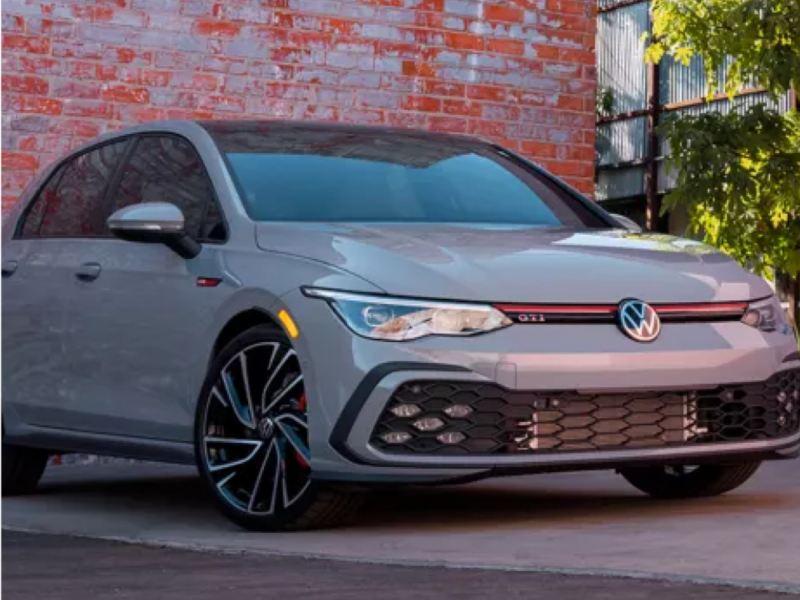
Shop Models

Build your ID.4
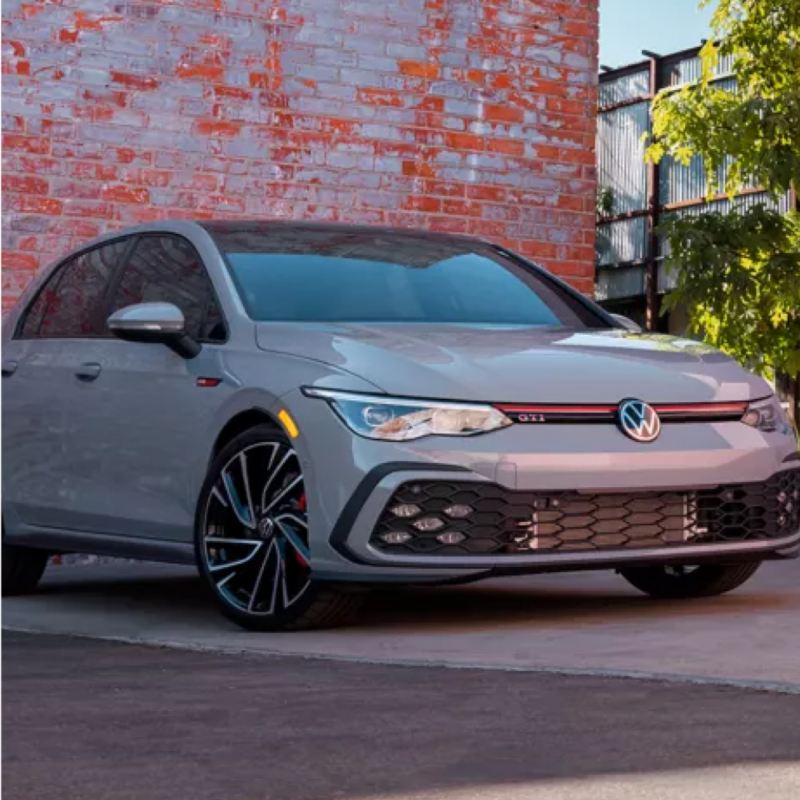
Cruise control
Automatically keeps your car moving at a safe, constant speed..
Our cruise control system 1 works electronically to help regulate your car's speed. It reduces the stress on drivers and offers you more comfort on long journeys by keeping the vehicle at a constant speed. It's particularly effective when you have to stay within speed limits for a long way - when driving through miles of roadworks on the motorway, for example - and cuts the risk of your speed creeping up by accident.
The system works by memorising and maintaining the speed you select. It's very flexible, too. You can increase or reduce speed manually - to a defined value - and you also have the option of returning to the speed most recently memorised.
The cruise control system can be turned off simply by pressing a button or by pressing the brake or clutch pedals. For safety reasons, the cruise control system should not be used in heavy traffic or in difficult road conditions, such as heavy rain or ice.
For more information watch our cruise control video Opens an external link
Adaptive Cruise Control (ACC)
Volkswagen ’s safe distance technology ..
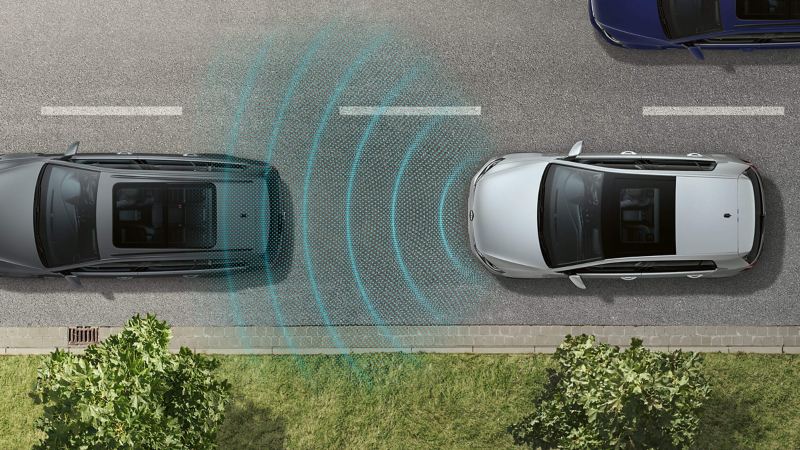
Adaptive Cruise Control (ACC) helps to avoid accidents by always keeping your car at a safe distance from the traffic ahead.
Working together with the radar-controlled Front Assist traffic monitoring system, our adaptive cruise control system keeps you at a safe distance from the vehicle in front, making driving much easier - whether on motor way journeys or in slow and moving traffic.
As with cruise control, you set the speed at which you want your car to maintain. This is then further enhanced by being equipped with the safe-distance technology using a radar sensor, which modulates your speed based on traffic conditions. The system detects traffic slowing ahead and automatically reduces your speed to match and maintain an appropriate gap to the car in front. If necessary, the system will bring your car to a complete stop.
It does this with the help of the Front Assist system which primes the brakes if it senses a collision is likely, shortening the stopping distance when the driver hits the brake pedal.
How it works
The safe-distance technology 's radar sensor has a range of up to 200 metres and a beam angle of 12 degrees. The radar sensor and control unit are combined into a single unit which is located at the front of the car.
Using the signals from the radar sensor, the control unit computes the distance to the vehicle ahead and your car's speed relative to it. It also works out its lateral position on multi-lane roads. If there are several vehicles within the sensor's field of coverage at the same time, this information is used to select which of the vehicles the system should track. The radar sensor is not capable of detecting stationary obstructions, such as the end of a tailback or crash barriers, however.
If approaching a slower vehicle ahead or if another vehicle cuts in front of you, the adaptive cruise control slows down the car by initiating corrective controls in the engine management and, if necessary, in the braking system too. If the required rate of deceleration exceeds 30% of the vehicle's maximum stopping power, visual and audible warning signals will prompt the driver to apply the brakes manually.

Adaptive Cruise Control V1.5
In addition to the standard Adaptive Cruise Control, this version has a greater operating range of speeds between 0 -130mph.
Adaptive Cruise Control with Predictive Cruise Control
In addition to the above, this updated version of ACC includes:
Road recognition - using information from front and rear cameras and route information, your vehicle will predictively adjust its speed prior to junctions and bends.
Speed Assist - using both the front camera and route information identifies changes in the posted speed limit and automatically adjusts the vehicles speed.
For more information watch our Adaptive Cruise Control video Opens an external link
Your protection is a priority for us, so we welcome independent crash tests to be carried out on our cars.

Green Car Future
The future's here, and it's shaping up to be a wild ride!
VW ID: The Difference Between ACC and Travel Assist (Is There One?)
In the current age, when we’re buying a new car, we tend to focus a lot of our attention on features and packages. When we were all buying internal combustion engine (ICE) cars, besides digital and technology features, we also took engine and mechanical features into account: cylinders, displacement, horsepower, torque, miles per gallon, etc. There’s been a shift, however, as we move toward electric cars.
With electric cars, we do care about range and battery capacity of course, but we are more fascinated by the software and digitally-driven features that dominate how the car works. Electric cars run so much more dependently on digital algorithms rather than mechanical power, and so what’s really exciting about them is what they can offer us on that front.
The VW ID.3 and VW ID.4 are part of a growing family of electric cars from Volkswagen. They also bring a lot of interesting technology to bear , including their much lauded Adaptive Cruise Control (ACC) system, and Travel Assist features.
The trouble with these 2 features, however, is that many people have trouble telling the difference between them? Are they just 2 names for the same feature? Is there a real difference? Is one for the ID.3 and the other for the ID.4?
In today’s blog, we want to answer these core questions and others.
ACC and Travel Assist – Two Features Explained
First of all, let’s deal with one important part of the core questions, which is that ACC and Travel Assist are two distinct things and are not simply the same thing renamed or repackaged. They are, however, closely related to one another , which is why there is some confusion about them in the first place.
Adaptive Cruise Control (ACC)
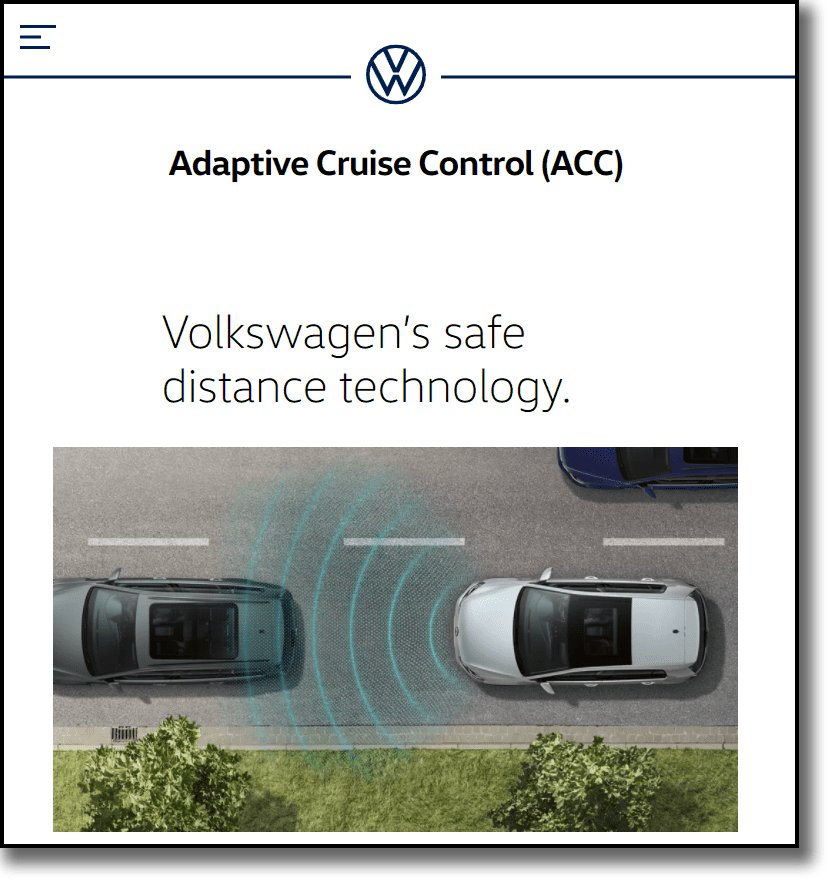
This is the older of the two features and is present in both the ID.3 and ID.4 vehicles . ACC is a feature not unique to VW cars, and in other cars might be known by the same or similar name, or something like “dynamic cruise control,” or “advanced cruise control,” and so on.
In essence, ACC is designed to maintain the driver’s speed, but then also adapt the speed according to the traffic conditions ahead. It does this both through braking and acceleration .
Early versions of ACC are limited to these functions, but the latest versions have also been augmented with a radar sensor , a camera and navigation data to help manage how it works according to local speed limits. The navigation data helps the car to calculate any required speed reductions required before hitting bends, roundabouts and intersections.
For clarity’s sake, we should say that ACC is by no means an autonomous driving system. The best way to think of ACC is as a much more advanced and updated version of cruise control that many cars have had for the past few decades.
Travel Assist
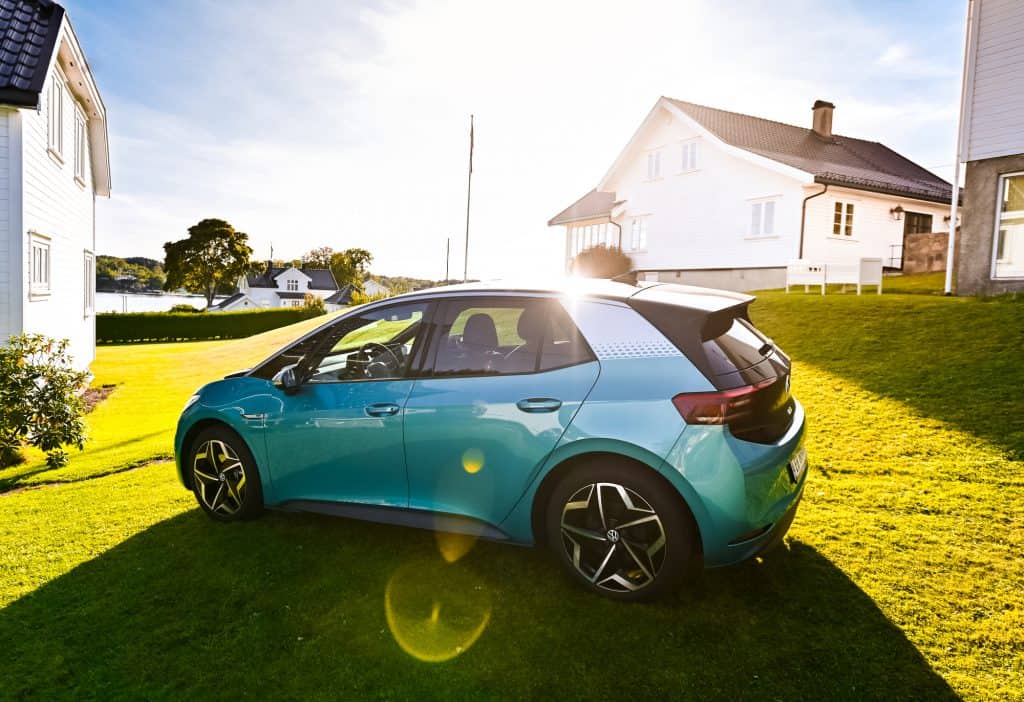
Now we come onto the Travel Assist feature. If ACC is an evolution of cruise control, then Travel Assist is a further evolution of ACC . More accurately, it’s a broadening of the scope of ACC to include and combine other features into a new package.
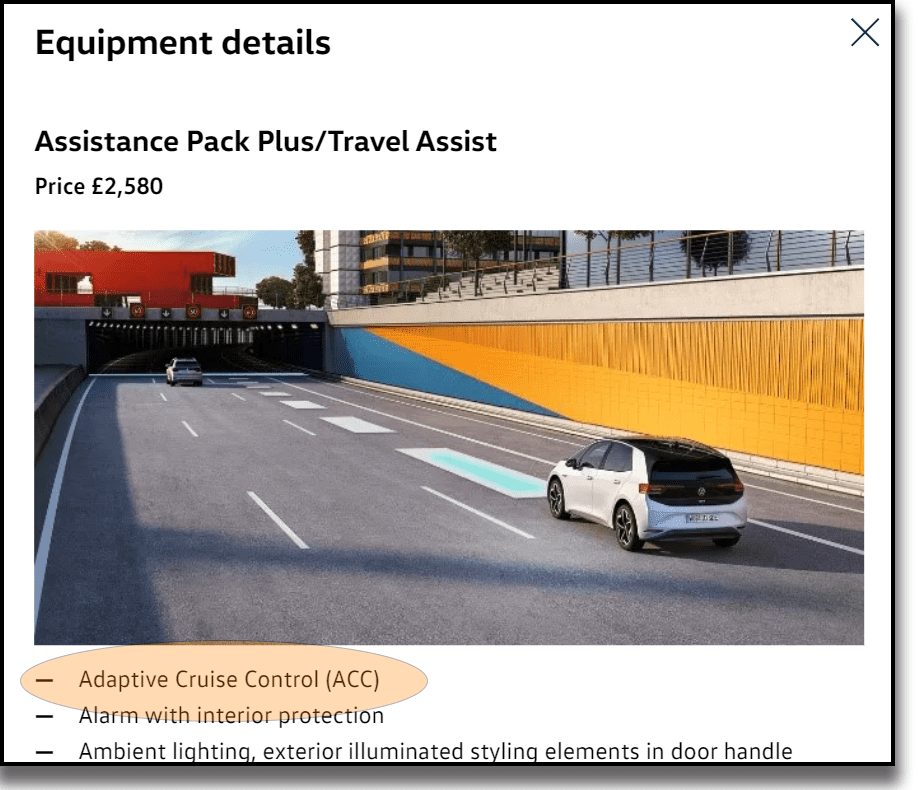
VW explains Travel Assist (also sometimes called Assistance Pack Plus) like a larger package of technology that now includes ACC. Another useful element combined into the package is lane keeping assist.
So what can Travel Assist do, exactly? The first thing to note here is that among the many functions of Travel Assist is the ACC system and its related functions. This is why people have been confused, because all Travel Assist systems include ACC, but not all VW cars with ACC have the wider Travel Assist package .
Travel Assist’s functions include (besides ACC), greater autonomous control of the accelerator, brake and steering, especially when driver inactivity is detected and the car predicts an emergency situation is coming. It’s activated by a button mounted on the steering wheel of your ID.3 or ID.4, symbolized by a car in lane with a speedometer next to it; the bottom-right button of the left-hand control cluster on the steering wheel.
When active, and assuming that the car’s sensors know and can identify the road that the car is on, that same symbol on the button will appear on the dash display as a green light. If the driver at any point applies the hydraulic brake, Travel Assist is automatically deactivated. To remain active, it requires that the driver’s hands remain on the wheel at all times.
What is “Emergency Assist”
Within the Travel Assist package you have ACC, the lane-keeping feature, and also Emergency Assist. This activates when the car detects no driver input — e.g. hands not on wheel — and a hazard perceived in the road ahead. Alternatively, if the driver is to remove their hands from the wheel, the car will first run for a few minutes without any problems .
It will then prompt the driver to return their hands to the wheel with a message on the dash display. If the driver fails to respond, an audible warning is activated.
If the driver fails to respond to the audible warning, then the car automatically enters Emergency Assist mode and will begin to slow the car down. It can even bring the car gradually to a safe and complete halt and activate the hazard lights. Imagine a scenario, for example, where a driver had a seizure or a heart attack and was left incapacitated.
The idea is that their car would be able to stop itself while also avoiding other cars around it, maintaining safe distances and speeds until that emergency mode kicked in .
ACC Vs. Travel Assist
So, now you can see that while both ACC and Travel Assist are clearly related, they bring distinct things to the table, with arguably the latter doing more for drivers and passengers, but both clearly being useful.
Surely, then, most people are clamoring to get their hands on the Travel Assist Package to upgrade their existing ACC system? It’s at this point where things start to get a bit complicated. Well, for those in the US market it’s actually quite simple. Travel Assist is a standard feature now on US models of the ID.4, but it’s the European market where things get harder .
In the UK, for instance, the ID.3 and ID.4 models all have ACC as a standard feature, but the Travel Assist features are only available on the Max trims and higher for both models. The new ID.5 SUV in the UK does have Travel Assist features as standard, as well as ACC.
What’s interesting is that there is even debate about how necessary Travel Assist is. As it happens, not everyone is clamoring to get their hands on it, with many arguing that ACC on its own is more than sufficient.
The ACC features a stop and go technology which makes heavy-traffic commutes much less tiring, and the ACC is apparently able to bring the car to a complete stop if needed .
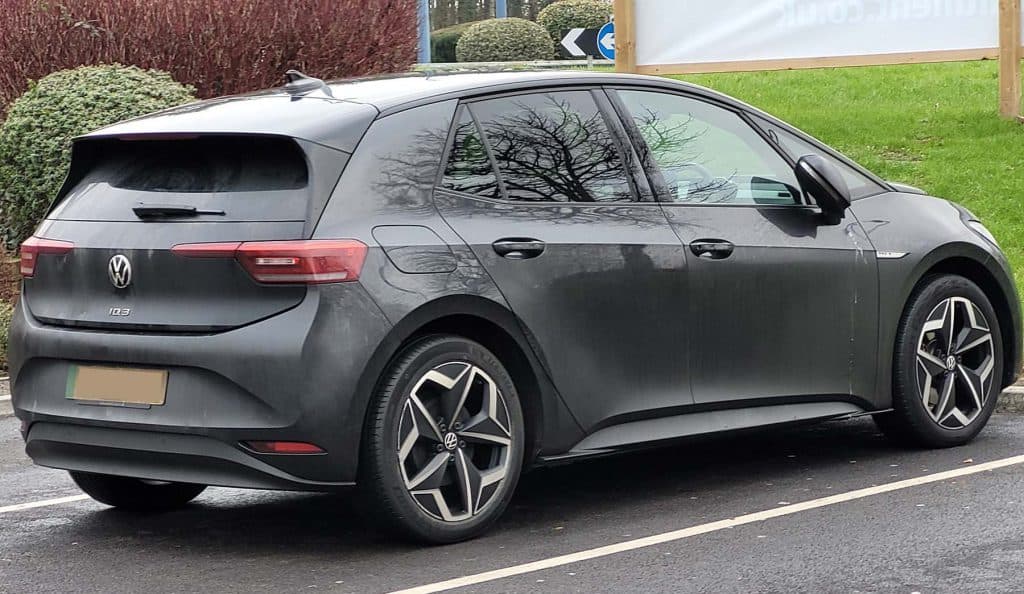
The main difference then for drivers is whether or not they want the assistance with lane keeping, steering and the emergency features. For many, it seems that these are overkill and not worth the extra money. Drivers in the US, however, it seems don’t really have to worry since it all comes as one single package.
Can I Get Travel Assist as an OTA Update?
Finally, there is a question for those with older ID models that only have ACC, and that is whether or not it’s possible to upgrade to get Travel Assist simply with an OTA update . This is similar to Tesla offering owners of its older models the ability to upgrade from standard Autopilot to the Full Self-Driving (FSD) package for a fee.
The reason that worked for Tesla is that it didn’t require the addition of any other hardware. As long as the main operating system was updated to the latest version, then it was possible to upgrade many vehicles with Autopilot without any problem.
There is a question mark over whether or not the VW ID models would be able to receive Travel Assist because of some potentially missing hardware, namely the hardware for the side assist features that help with lane keeping and steering assistance.
If that’s the case, then no OTA is possible, but if it turns out existing hardware is sufficient, then it’s certainly something VW could offer.
Related Reading: Do Any VW ID Cars Have Ventilated Seats?
Leave a comment Cancel reply
Save my name, email, and website in this browser for the next time I comment.
JavaScript seems to be disabled in your browser. For the best experience on our site, be sure to turn on Javascript in your browser.
Our website uses cookies to provide the best browsing experience. By continuing to use website you agree to our cookies policy. You can always change it on your browser settings at any time. I Agree More information
What is VW ACC Adaptive Cruise Control ?
Volkswagen VW Adaptive Cruise Control in short ACC is one of the driver assistant features now available as a new function on VW vehicles. The system is designed to assist you when driving both short and long distances. When you become accustomed to having the system activated you will find driving safer and easier. To enjoy the benefits of the system and improve your driving experience please read below, to understand how the system works and how to adjust it to suit your individual driving style.
How does Volkswagen adaptive cruise control work?
The ACC system works in two ways, by maintaining a set speed and also by maintaining a set distance between your vehicle and the vehicle in front of you. Radar enables the sensors on your vehicle to detect the distance of the vehicle in front of you and the system is activated between speeds from approximately 20 mph up to 95 mph. You can choose to adjust the adaptive cruise control distance, and when a vehicle is moving slower than you the system automatically decreases the speed of your vehicle. In addition, when a vehicle suddenly stops or starts to move slowly in front of you, the system is also capable of activating the brakes, if required.
How to use adaptive cruise control in your Volkswagen car?
You will then be able to select the speed you want the cruise control to maintain. To do this you need to press the set button and if you look at the instrument cluster, the speed you have selected will then be visible.
The next step is adjusting the following distance by setting a time interval.
You will find the “Adaptive Distance” button located on your steering wheel. The time interval is set by pressing this button and can be altered by pressing the plus or minus buttons, this will allow you to select between the five available time interval options.
How to deactivate the Adaptive Cruise Control system
There are two ways to deactivate the system; on your steering wheel you can press the cruise control or you can use the brakes. When you want to reactivate the cruise control, simply press the button labeled “Resume” located on the steering wheel and the most recent speed selected will then be reset.
But if your VW ACC is deactivated and can't be enabled via steering wheel or other ways it might be that radar has malfunction and needs to be replaced.
Additional driving assistant package
In addition to the adaptive cruise control system, the other available features of the driving assistant package include:
The blind spot monitor feature- this uses sensors to notify you if there is a vehicle in your blind spot when you want to change lanes.
The lane assist system- this senses if the vehicle starts to drift and alerts you to change your steering.
The park assist system- this will check if your vehicle has enough room to fit into a gap and will direct your steering to assist you with parking in the space.
The front assist system- this consists of a collection of features. Forward collision warning, autonomous emergency braking, and pedestrian monitoring systems work in conjunction to make you aware of any vehicles or pedestrians in front of you and when necessary will apply the brakes to avoid a collision.
The rear traffic alert feature- this uses sensors located at the back of your vehicle to make you aware of any vehicles or pedestrians behind you applying the brakes when needed to prevent impact.
Information about Volkswagen ACC radarsensor
For 2019 and 2020 when new Volkswagen Adaptive Cruice Control was introduced all cars were fitted with 3QF907561D front bumper radar sensor, which is manufactured by Hungary based Anatel company, but all items are made exclusively for german company Bosch, some front distronic radars are made in Mexico as well.
VW 3QF907561D Distance control unit is factory fitted on the newest VAG group cars such as VW Atlas Arteon Golf MK7 VII 7.5 (5G1 BE1) Facelift Touran Passat B8 Jetta R-Line, Audi and Skoda Octavia 5E MK3.
In addition VAG group includes VW Audi Seat and Skoda cars.
Part numbers of front distance sensors:
- 3QF 907 561 D 3QF907561D
- HW: 3QF907572A
- Bosch: 0203302268
- 3QF 907 561 3QF907561
- HW: 3QF907572
- Bosch: 0203300580
- 3QF 907 561 C 3QF907561C
- Bosch: 0203301965
- 3QF 907 561 A 3QF907561A
- Bosch: 0203301261
Usually when there is some kind of malfunction related to ACC radarsensor you'll see the following warning messages on the dashboard.
- Error: Front assist
- ACC and Front Assist are not available
- Front Assist not available
- Front assist: sensor impaired
As always if you find this blog post usefull or would like to share with your friends on social media please do it without any doubt to make sure more VAG group car owners know about this amazing new system.
This entry was posted in Adaptive Cruise Control on November 21, 2019 by Xenons4u Team .
- VW Volkswagen Golf MK7 VII Error Adaptive Front Lighting system (AFS) warning message explained
- Volvo Headlamp System Malfunction Service Required Warning Message
- VW Volkswagen check front left right fog light warning message explained
- VW Volkswagen Golf MK7 VI Check Left Right Dipped Headlight Beam Warning Message Explained
- Mercedes Benz EQC Review
Does it work? VW's Predictive Cruise tested

► Arteon’s predictive cruise ► It’s not perfect… ► …but still clever
We’ve reached the next stage of cruise control. First came the blind and basic stick-to-a-set-speed system. Then, in adaptive cruise control systems, radar and cameras would combine to guide braking and acceleration to keep you a set distance from the vehicle in front. Now we’re into the next phase: the car knows where it is and knows what’s coming up – roundabouts, sharp bends, crossroads – so it can adjust its speed accordingly.
The Predictive Cruise feature fitted as standard on all versions of the VW Arteon isn’t the first of its type, but it’s one of the newest systems, and the car is more affordable than the Mercedes S-Class that leads the way with this sort of thing.
The Arteon uses its sensors and navigation data to prepare for what’s ahead – say a particularly sharp bend that may be too fast at your current pace – regardless of whether a route has been programmed in to the sat-nav. The system will tell you via a prompt on the info display what’s coming up and the speed which it intends to slow down to
We tried it on dual carriageways and country roads near CAR’s Peterborough HQ. The idea was to put our faith in the system, and see if it would save us from ourselves if we attempted something unwise.
Out in the sticks, on 60mph-limit lanes with the cruise set to 60mph, the Arteon reacted well to three sharp corners. It slowed down to around 30mph in all three cases, allowing a smooth swoop around the corner, then accelerated. For the most part the system was similarly effective on dual carriageways. Several approaches to roundabouts were handled successfully, the car slowing down in time to give a good view of the traffic we’d have to give way to.
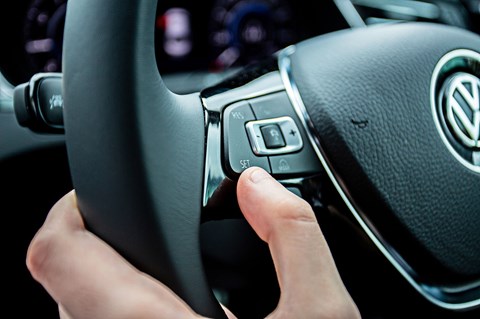
But on one occasion, driving up to a roundabout the car had previously dealt with successfully, the system decided to drop anchor around 400 yards early, startling the road users behind us. We don’t know why. The car was clean, it was on a straight part of dual carriageway and in the right-hand lane, so the scanners would have had a clear view of the road ahead; we weren’t asking the system to process the complex protocols of undertaking.
VW says it’s not aware of any issues with the system that would have led to this, but wanted to stress that adaptive cruise isn’t infallible, so the driver must always be switched on and ready to brake.
How to use all-seeing, all-knowing cruise control
1. Switch on as usual
Predictive element of cruise built into wheel-mounted buttons with no dedicated switch of its own.
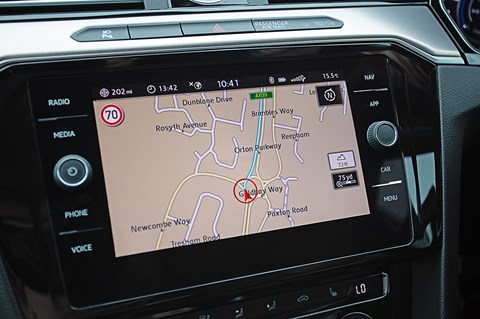
2. It knows where you are
System will have a good guess at where you’re going, whether or not you’ve input a destination or route.
3. Hazard ahoy
Car tells you what it’s aware of and what speed it plans to adopt. You can override it.

Does it work?
Mostly. But it really depends on the navigation data it has and if the various scanners and radar have the clearest view; it worked on plenty of different road types, both urban and in the sticks, pretty well. The particular time it didn’t work was startling. Afterwards, it resumed working as it had been doing before that rogue incident. It’s a useful assistant, but it should never be operated as something you can fully lean on to drive for you.
Check out more CAR tech news here
By Jake Groves
CAR's deputy news editor, gamer, serial Lego-ist, lover of hot hatches


Home » Tips & Tricks » How to use Adaptive Cruise Control on VW Tiguan
How to use Adaptive Cruise Control on VW Tiguan
Adaptive Cruise Control on Volkswagen Tiguan helps maintain an individually stored constant speed between about 20 miles per hour and 95 miles per hour at a previously set distance in time intervals between your vehicle and those in front of you.
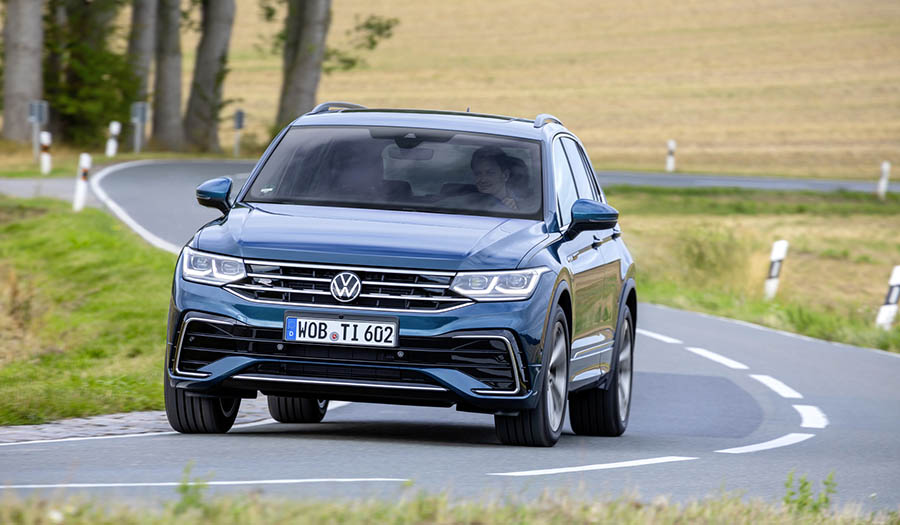
To switch on adaptive cruise control, press the on/off button on your steering wheel, the system is now active but no speed is set. To save the current speed when the vehicle is moving, press the SET button.
The set speed appears in the instrument cluster and the adaptive cruise control system begins regulating the speed to help automatically maintain a comfortable following distance to a vehicle in front.
Adjusting distance / gap
The adaptive cruise control system helps maintain the following distance by determining a time interval, resulting in a speed dependent distance. When adaptive cruise control is active, the following distance to the vehicle in front can be adjusted to one of five positions by pressing the adaptive distance button on the steering wheel.
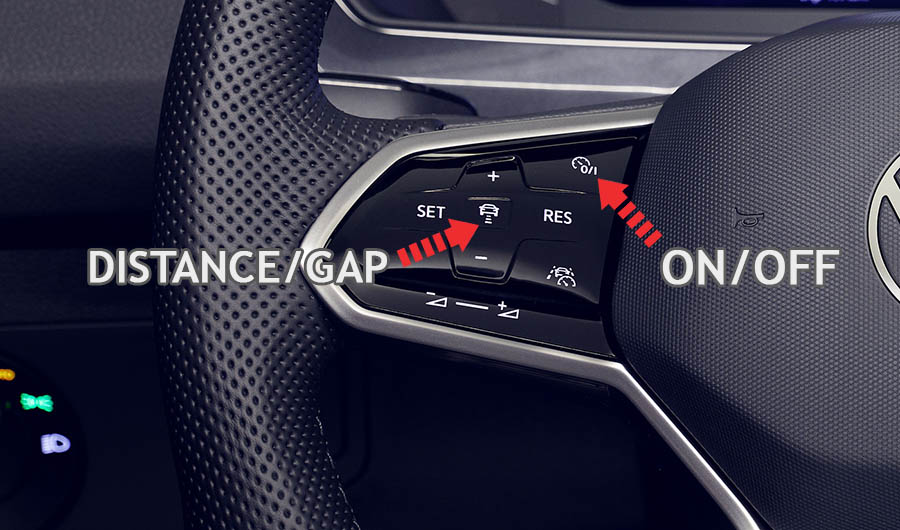
The distance intervals can also be set using the plus or minus buttons immediately after pressing the adaptive distance button.
When a slower moving vehicle directly ahead is detected, adaptive cruise control automatically slows down and helps maintain the distance that has been set. Once the slower vehicle moves out of the way, the system adjusts back to the set speed.
Stop and Go
If the vehicle traveling ahead brakes to a standstill, adaptive cruise control will also brake your vehicle to a standstill. The driver assist system holds your vehicle stationary with the brakes and adaptive cruise control staying active. To drive off after being stationary briefly, press the accelerator, adaptive cruise control will resume speed regulation as long as the vehicle in front is moving again.
Deactivate and resume ACC
To deactivate cruise briefly press the cruise on/off button on the steering wheel, or press the brake pedal. To resume the previously set speed, press the resume button RES .
To increase the speed by one mile per hour, briefly press the plus button or press and hold to increase the set speed in increments of five miles per hour. Press the minus button briefly to reduce speed by one mile per hour, or press and hold to reduce the set speed in increments of five miles per hour.
In addition to the functions of a traditional cruise control system, adaptive cruise control can help speed up or slow down your car to keep a comfortable following distance to the car ahead.

2 thoughts on “ How to use Adaptive Cruise Control on VW Tiguan ”
Good useful information.
Cruise control goes off when you turn off ignition is there a way to keep it on always? like older models?
- Citroen C1 ABS light is on – causes and how to reset
- Mercury Sable low oil pressure light is on – causes and how to reset
- Infiniti Q50 bad wheel bearings symptoms, causes and diagnosis
- Hyundai Bayon burning smell causes and how to fix it
- Infiniti Q60 Apple CarPlay not working – causes and how to fix it
- How to remote start Cadillac XT6 with key fob or mobile device
- Alfa Romeo Giulia Apple CarPlay not working – causes and how to fix it
- Mazda3 bad ignition coils symptoms, causes, and diagnosis
- Chevy Avalanche pulls to the left when driving
- Wireless Android Auto on Audi SQ8, how to connect
- Ford Explorer bad O2 sensor symptoms, causes, and diagnosis
- Chrysler Aspen heater not working – causes and diagnosis
- Pontiac G6 uneven tire wear causes
- Chrysler Voyager pulls to the right when driving
- Kia Sedona bad wheel bearings symptoms, causes and diagnosis
- Toyota Supra Bluetooth not working – causes and how to fix it
- Mini bad ignition coils symptoms, causes, and diagnosis
- Chrysler PT Cruiser auto windows not working, how to reset
- Mercedes-Benz GLB steering wheel controls not working – causes and how to fix it
- Lexus NX Apple CarPlay not working – causes and how to fix it

Table of Contents
- General tables of the vehicle
- Driver's door
- Driver's Side
- Center console
- Driver Information
- Symbols in the instrument panel
- Warning and information messages
- Introduction to the instrument panel
- Digital instrument cluster, Pro version
- Digital Instrument Cluster, Basic Version
- Rev counter
- Fatigue detection system
- Traffic sign detection system
- Personalization
- Seat position
- Proactive occupant protection
- Airbag system
- Transporting children safely
- In case of emergency
- Opening and closing
- Vehicle key
- Keyless start and lock system Keyless Access
- Doors and central locking key
- Anti-theft alarm
- Adjust the position of the steering wheel
- Seats and head restraints
- Front seats
- Head restraints
- Seat functions
- Turn signals
- Vehicle lighting
- Interior lighting
- Glass cleaner
- Rear view mirrors
- Protection from the sun
- Heating, ventilation system and climate control
- Heating, ventilating and cooling
- Independent ventilation and cooling
- Driving directions
- Start and Stop engine
- Start—Stop system
- Manual shift
- Automatic gearbox
- Driving on slopes
- Driving profile selection and 4MOTION Active Control
- Off—road indicator
- Off—road driving
- Driver assistance systems
- Cruise control (GRA)
- Speed limiter
- Adaptive Cruise Control (ACC)
- Pre—speed regulation
- Emergency braking assistant (Front Assist)
- Lane Departure Warning Assist (Lane Assist)
- Driving assistant (Travel Assist)
- Emergency Assistant (Emergency Assit)
- Lane Change Assist (Side Assist)
- Park and maneuver
- Electronic parking brake
- General instructions regarding parking systems
- Parking assistance settings
- Reverse Assist (Rear View)
- Assisted parking system (Park Assit)
- Peripheral vision system (Area View)
- Trailer assist
- Leave a parking spot assist
- Brake assistance systems
- Practical equipment
- Folding table
- Ashtray and lighter
- Power suppliers
- Data transmissions
- Cybersecurity
- Upgrade system
- VW WeConnect
- Activate function WeUpgrade
- Wifi access point
- Wired and wireless connection
- Infotainment system
- First steps
- Telephone interface
- Voice control
- Transport of objects
- Placing luggage and cargo
- Trunk cover
- Trunk floor
- Separation net
- Luggage compartment equipment
- Driving with a trailer
- Towing device
- Bicycle carrier
- Fuel and exhaust gas purification
- Safety warnings regarding the handling of fuel
- Types of fuel and refueling
- Exhaust gas purification
- Various situations
- On-board tools
- Wiper blades
- Exterior lighting
- Change fuses
- Starting aid
- Check and reset
- In the engine compartment
- Liquids and operating media
- Window washer fluid
- Engine coolant
- Brake fluid
- 12 volt battery
- Rims and tires
- Tire monitoring systems
- Important information about wheels and tires
- Change a wheel
- Maintenance
- Vehicle maintenance
- Accessories, change of parts, repairs
- Information for clients
- Legal guarantee
- Long-Term Mobility Guarantee
- Memories and data services
- Black Box (Event Data Recorder)
- Stickers and signs
- Air conditioning fluids
- Infotainment system and antennas
- Component protection
- Information regarding the EU regulation on chemical substations
- Disposal of batteries, accumulators
- Declaration of conformity
- Information about the copyright
- Delivery and scrapping of vehicles at the end of its life
- Important information for vehicles of N1 category
- Declaration of conformity of radio equipment in Europe
- Declaration of conformity of radio equipment in non-European countries
- Technical data
- Notes on technical data
- Vehicle identification number
- Model plate
- Security certificate
- VW Tiguan Dimensions
- VW Tiguan Fuel tank volume
- Gasoline engines
- Diesel engines
- MultiFuel Engines (E85)
VW Tiguan 2021 Owner's Manual ➜ Adaptive Cruise Control (ACC)

What If My Vehicle Doesn’t Start?
2022 Mazda Kona EV

VWtiguan.net
VW Tiguan Service & Owner's Manuals - view online or download in PDF for free!
Useful links
- VW Tiguan Owner's Manual
- VW Tiguan Service & Repair Manual
- VW Tiguan Espanol Owner's Manual
Driver Assistance Videos
Deactivating adaptive cruise control.
Describes how to temporarily or permanently turn off Adaptive Cruise Control and revert to standard Cruise Control.

- Forum Listing
- Marketplace
- Advanced Search
- VW Model-Specific Forums
- Tiguan (MQB)
C110BF0 - Adaptive cruise control sensor
- Add to quote
Sometimes when driving the red alarm in the dash goes off that there are things around me to be alert when driving alone note near anything. This happens a lot. The dealer said there is nothing wrong. What do I need to look at to fix this or the errors below? OBDeleven vehicle history log Date: 2021-08-01 20:16:21 Car: TIGUAN Year: 2018 Body type: SEL Engine: DGUA kW ( hp) l Mileage: 48441 mi --------------------------------------------------------------- 13 Adaptive Cruise Control System description: ACCCONTIMQB Software number: 2Q0907572M Software version: 0233 Hardware number: 2Q0907572B Hardware version: H02 Faults: C110BF0 - Adaptive cruise control sensor Restricted view Intermittent Priority - 4 Malfunction frequency counter - 1 Unlearning counter - 112 km-Mileage - 76943 km Dynamic environmental data - 028587028D5A1011129A1012FD80102E06 date - 2021-07-17 14:35:03 C110BF0 - Adaptive cruise control sensor Restricted view Intermittent Priority - 6 Malfunction frequency counter - 2 Unlearning counter - 112 km-Mileage - 76944 km Dynamic environmental data - 028583028D5A10111B1A101202C0102E06 date - 2021-07-17 14:36:11 C110BF0 - Adaptive cruise control sensor Restricted view Intermittent Priority - 6 Malfunction frequency counter - 1 Unlearning counter - 112 km-Mileage - 76942 km Dynamic environmental data - 028582028D5A101113F01012FFC0102E00 date - 2021-07-17 14:34:50
Have done anything to your front VW badge? Those errors are saying something is blocking it.
I put a tiny German flag on it... is that really causing it?! Lol! I'll take it off if that's the case.
Where's the sensor exactly?
The sensor is behind the front VW emblem in the grille.
Ok. There is no way anything is obstructing that on my Tig. Do you think this module could be bad with these errors then?
Before replacing the sensor I would try and get it calibrated. Make sure your vw emblem is clean and smooth. If it has a raised emblem it is the wrong one.
- ?
- 84.5M posts
- 1.5M members
Top Contributors this Month
- Media Service / Images
Adaptive Cruise Control (ACC) with predictive cruise control
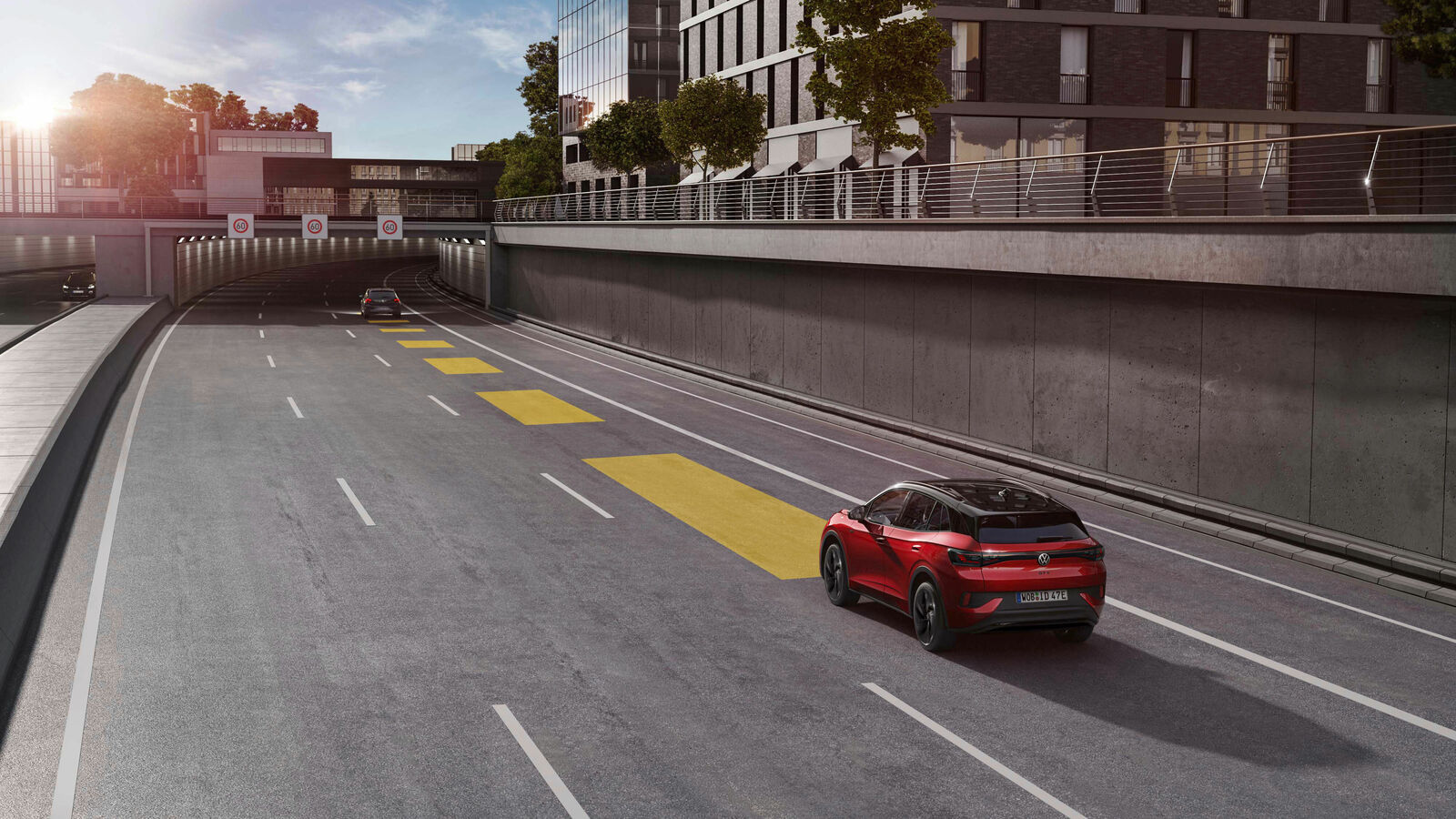
- Terms of Service
- Cookie Policy
- Third Party Licence Notes
- Volkswagen AG
- Cookie Settings
- Press Releases
- Basic Infos
- Media Documents
- Media Contacts
The Volkswagen Newsroom is an open platform and offers comprehensive search options to all users.
If you would like to be kept informed about our press releases you can also subscribe to our media information newsletter.
The specified fuel consumption and emission data are determined in accordance with the measurement procedures prescribed by law. 1 January 2022, the WLTP test cycle completely replaced the NEDC test cycle and therefore no NEDC values are available for new type approved vehicles after that date.
This information does not refer to a single vehicle and is not part of the offer but is only intended for comparison between different types of vehicles. Additional equipment and accessories (additional components, tyre formats, etc.) can alter relevant vehicle parameters such as weight, rolling resistance and aerodynamics, affecting the vehicle's fuel consumption, power consumption, CO 2 emissions and driving performance values in addition to weather and traffic conditions and individual driving behavior.
Due to more realistic testing conditions, fuel consumption and CO 2 emissions measured according to WLTP will in many cases be higher than the values measured according to NEDC. As a result, the taxation of vehicles may change accordingly as of 1 September 2018. For further information on the differences between WLTP and NEDC, please visit www.volkswagen.de/wltp .
Further information on official fuel consumption data and official specific CO 2 emissions for new passenger cars can be found in the "Guide to fuel economy, CO 2 emissions and power consumption for new passenger car models", which is available free of charge from all sales dealerships and from DAT Deutsche Automobil Treuhand GmbH, Hellmuth-Hirth-Str. 1, D-73760 Ostfildern, Germany and at www.dat.de/co2 .

COMMENTS
Adaptive cruise control (ACC) helps drivers maintain a constant speed and distance from the vehicle ahead using sensors to detect other vehicles. The system can reduce speed of the vehicle if there is a slower moving vehicle ahead, bring the vehicle to a standstill, and resume speed regulation as long as the vehicle in front is moving again.
While VW's Adaptive Cruise Control is designed to provide a seamless driving experience, there have been a few reported issues that may impact its performance. Some of the most common problems with VW's ACC system include: Sudden disengagement of the system. Inaccurate speed control. False alerts and warnings.
Still, from 2019 onwards, Volkswagen Jettas have had adaptive cruise control (ACC) in their higher trims and the more-basic cruise control in the lower ones. Cruise control is standard across all Volkswagen Jettas from 2003 to 2018, with the 2001 and 2002 models only having the system in the more-expensive trims.
Models. Adaptive Cruise Control ACC helps you to maintain a previously set maximum speed and a predefined distance to the vehicle ahead 03. It also features predictive cruise control and cornering assist function. ACC can adapt the vehicle speed to the applicable speed restrictions and course of the road (bends, roundabouts, etc 0304.
The Travel Assist feature in your Volkswagen combines Adaptive Cruise Control with Lane Assist to help maintain the vehicle 's position within the lane. When activated, it provides the driver with steering assistance, braking, and acceleration support. This feature allows the vehicle to maintain a predetermined distance from the vehicle in ...
Lane keep system performs good but better to have a combined function with lane centering.
Adaptive Cruise Control (ACC) helps to avoid accidents by always keeping your car at a safe distance from the traffic ahead.. Working together with the radar-controlled Front Assist traffic monitoring system, our adaptive cruise control system keeps you at a safe distance from the vehicle in front, making driving much easier - whether on motor way journeys or in slow and moving traffic.
Adaptive Cruise Control. Adaptive Cruise Control (ACC) helps Volkswagen vehicles maintain a preset speed and distance from the car in front of you. When activated, if the car in front of you speeds up or slows down, the sensors can detect the change and your car follows suit. Schedule Service.
VW ID adaptive cruise control screenshot from their website This is the older of the two features and is present in both the ID.3 and ID.4 vehicles . ACC is a feature not unique to VW cars, and in other cars might be known by the same or similar name, or something like "dynamic cruise control," or "advanced cruise control," and so on.
Volkswagen VW Adaptive Cruise Control in short ACC is one of the driver assistant features now available as a new function on VW vehicles. The system is designed to assist you when driving both short and long distances. ... Facelift Touran Passat B8 Jetta R-Line, Audi and Skoda Octavia 5E MK3. In addition VAG group includes VW Audi Seat and ...
Keeps you in your lane. And others at a distance. With the optional Travel Assist, you have an extremely useful driving assistance system on board. It can keep your vehicle in its lane, keep its distance from the vehicle in front and maintain your pre-defined speed. 010203. Among other things, it uses the adaptive lane guidance system for this.
The Arteon is a gran turismo, ideal for long distances. The new, optionally available "adaptive cruise control ACC" with predictive speed control gives enhanced comfort over long distances. The further developments in "ACC" can integrate speed limits for the first time. So far, the assistance system was known purely as cruise control: adjust the desired speed, that's all. Within system limits ...
How to use all-seeing, all-knowing cruise control. 1. Switch on as usual. Predictive element of cruise built into wheel-mounted buttons with no dedicated switch of its own. 2. It knows where you ...
No matter whether you want sporty or more comfort-oriented handling, Adaptive chassis control DCC offers you the option of adapting the running gear to your wishes. The electronically controlled shock absorbers react to road conditions and the driving situation in milliseconds and automatically adjust the damping characteristics. You can choose ...
Adaptive Cruise Control makes road trips or any commute a lot easier. Watch this video to learn how to use Adaptive Cruise Control in your 2021 Volkswagen Ti...
2021 Volkswagen Tiguan, second generation facelift - (photo by VW) To switch on adaptive cruise control, press the on/off button on your steering wheel, the system is now active but no speed is set. To save the current speed when the vehicle is moving, press the SET button. The set speed appears in the instrument cluster and the adaptive ...
Speed range You can set. — Cruise control (GRA) a speed between approx. 30 km/h (20 mph) and 210 km/. h (130 mph). Depending on the equipment and the country, the maximum adjustable speed may be lower. — Adaptive Cruise Control (ACC) 1. Press the key.
Adaptive Cruise Control ACC stop & go with speed limiter is also integrated in Travel Assist. This system controls the distance to the vehicle in front by accelerating and braking as necessary. The system's functionality is even more predictive in conjunction with Eco Assistance: for instance, the system automatically reduces the ID.3's ...
VW Touran ACC, VW Touran Front Assist , VW Touran ACC , VW Touran 2005 ACC , VW Touran 1T1 ACC , VW Touran Adaptive cruise control, VW Touran tempomat ada...
Describes how to temporarily or permanently turn off Adaptive Cruise Control and revert to standard Cruise Control.
13 Adaptive Cruise Control System description: ACCCONTIMQB Software number: 2Q0907572M Software version: 0233 Hardware number: 2Q0907572B Hardware version: H02 ... 2022 VW Tiguan Highline R-Line 2017 VW Golf Alltrack Past: 2020 VW Tiguan, 1999 Audi A4, 1996 VW Golf, 1977 VW Rabbit. Reactions: twiggs462 and snobrdrdan.
This system takes over the steering, braking and acceleration of the vehicle at speeds of up to 210 km/h. IQ.DRIVE Travel Assist is able to draw on familiar systems: longitudinal control is supported by Adaptive Cruise Control ACC, while lateral control uses the standard lane keeping assistant Lane Assist 2. The system is activated at the touch ...
Adaptive Cruise Control (ACC) with predictive cruise control ID.4 GTX - power consumption in kWh/100 km: combined 19.3-17.2; CO₂ emissions in g/km: 0; only consumption and emission values in accordance with WLTP and not in accordance with NEDC are available for the vehicle.